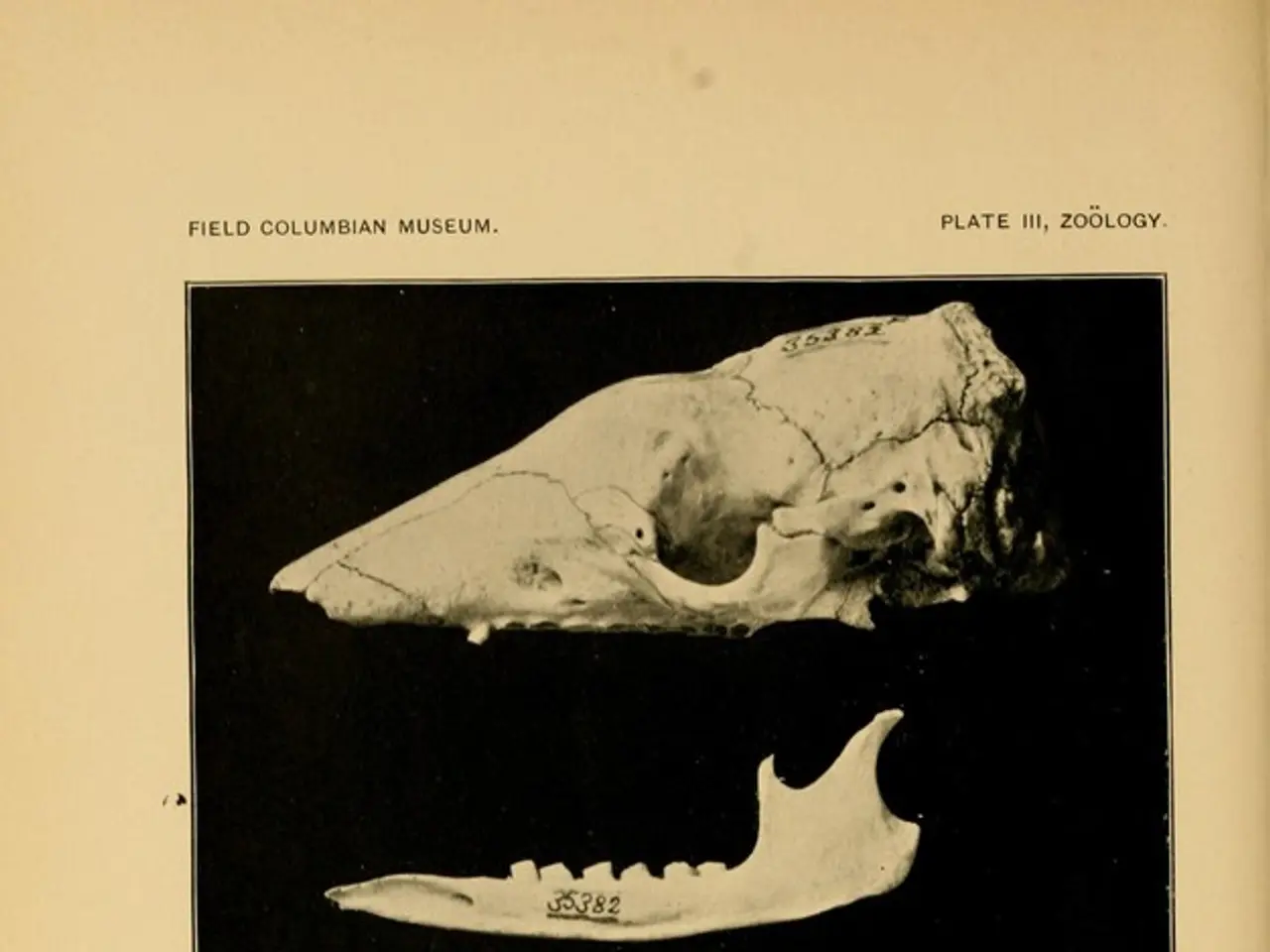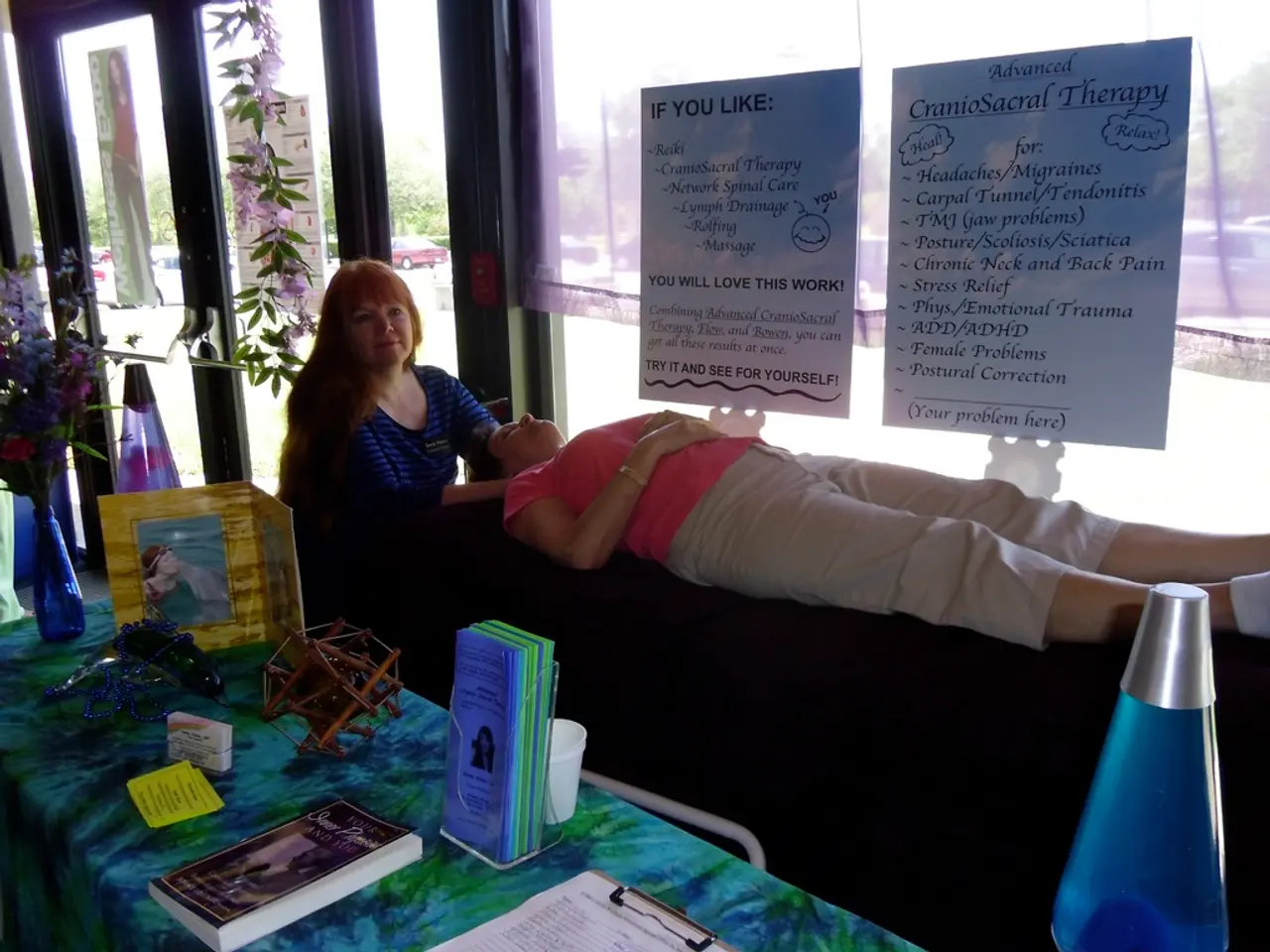Exercises for Osteoporosis: Suggestions and Strategies for Minimizing Bone Wastage
Strengthening Bones and Preventing Falls: A Guide to Exercises for Osteoporosis
Exercises play a crucial role in maintaining bone health and reducing the risk of falls, particularly for those with osteoporosis. Here, we provide a list of recommended exercises and those to avoid, as well as some additional notes to help you get started.
Recommended Weight-Bearing and Strength Training Exercises:
- Bodyweight squats and chair sit-to-stands: These exercises strengthen the thighs, hips, and buttocks, while also engaging the core and lower back.
- Lunges and step-ups on low stairs: These improve leg and hip strength, as well as balance and coordination.
- Wall push-ups: These build upper body and wrist strength safely.
- Resistance band rows and standing heel raises: These help strengthen back muscles and calves.
- Bridges: These exercises strengthen the core and glute muscles.
- Balance exercises: Standing on one leg (with support), heel-to-toe walking, and gentle lunges can reduce the risk of falls.
- Tai Chi: This martial art is demonstrated to improve muscle and bone strength, balance, and flexibility, lowering fracture risk in postmenopausal women.
Exercises to Avoid:
Avoid movements involving deep spinal twists, loaded forward bends, or high-impact activities such as jogging or jumping that risk sudden falls or fractures. Exercises causing excessive spinal flexion or rotation may increase vertebral fracture risk. Avoid heavy lifting without proper guidance and sudden jerky movements.
Additional Notes:
- A physiotherapist’s guidance is crucial to personalize exercise intensity, form, and progression safely.
- Aim to exercise for 30 minutes, 2-3 times per week, combining strength, balance, and aerobic activities for optimal bone health.
- Focus on strengthening high-risk areas (spine, hips, wrists) to protect vulnerable bones.
- Low impact weight-bearing exercises include doing low impact aerobics, fast walking, using elliptical training machines, and using stair-step machines.
- Non-weight-bearing exercises move body parts without having to overcome gravity and include swimming, cycling, and doing chair exercises.
- People with osteoporosis should avoid exercises that repetitively bend or flex the spine, such as situps, crunches, toe touches, yoga poses that round the spine, spinal twists, skiing, and ice skating.
- People with osteoporosis should start exercises slowly and gradually increase the intensity and duration over time.
- Resistance exercises can build bone density, reduce the risk of fractures and breaks, and improve muscle strength and balance.
- Always consult a doctor or physical therapist before starting a new exercise routine.
- Older adults are at higher risk of falling, and doing activities that strengthen the legs, help with balance, and improve posture can reduce the chance of falls.
By incorporating these exercises into your routine, you can help strengthen your bones, improve your balance, and reduce your risk of falls. Always remember to consult with a medical professional before starting any new exercise programme.
- Engaging in weight-bearing exercises, such as bodyweight squats and chair sit-to-stands, can help strengthen bones and reduce the risk of falls, particularly beneficial for individuals with osteoporosis.
- Strength training exercises, like wall push-ups and resistance band rows, can build upper body and back muscles, which may aid in preventing fractures caused by chronic diseases like osteoporosis.
- Balance exercises, including standing on one leg and heel-to-toe walking, play a crucial role in reducing the risk of falls and are essential for maintaining health and wellness in individuals dealing with osteoporosis.
- Incorporating fitness and exercise, such as walking, elliptical training, cycling, and low-impact aerobics, into your routine can improve overall health, including bone health and wellness, and reduce the risk of falls.
- Integrating proper nutrition into your diet, along with regular exercise and fitness, can help maintain healthy bones and prevent fractures caused by accidents and falls, making it an essential aspect of health and wellness for people with osteoporosis.




